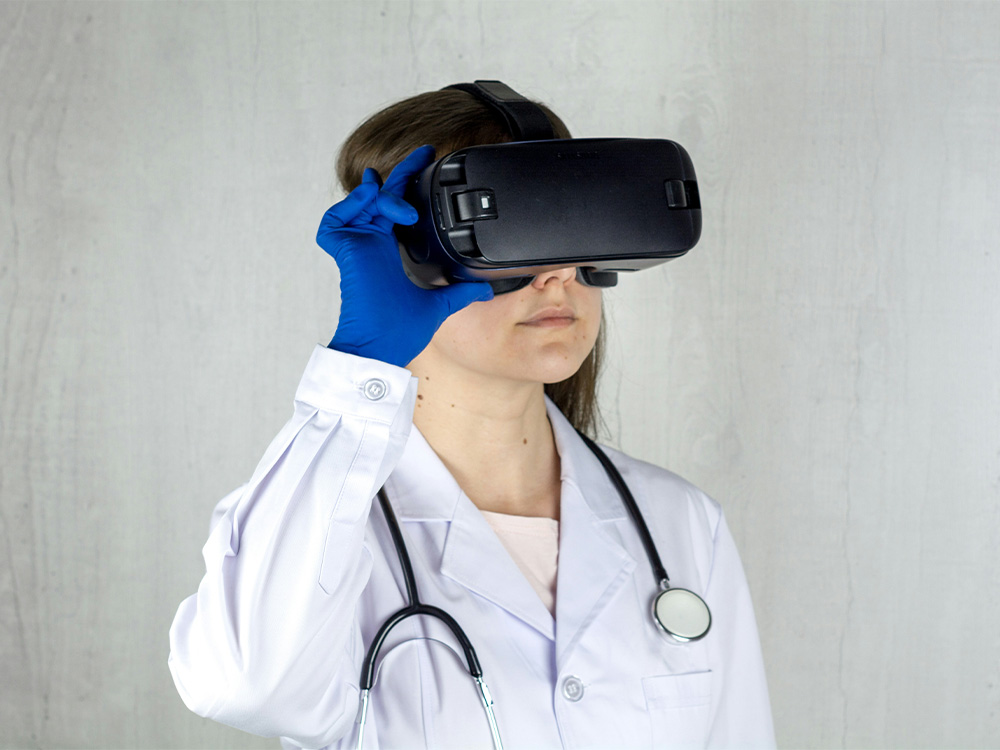Response to Darzi’s report
Blog

The NHS is Stretched Thin: Can Automation and AI Help Save the Day?
Let’s be honest—the NHS is feeling the pressure. It’s like running a marathon with your shoelaces tied together, and every time you think you’re near the finish line, someone moves it a mile further.
Last week, Lord Darzi dropped his Independent Investigation of the NHS in England, and if you weren’t already sweating, buckle up—it confirms what we knew but wasn’t being said. But hey, it’s not all doom and gloom. There’s a light at the end of the tunnel. Partly powered by technology, but we’ve got to be smart about how we use it.
So, what’s going on, how did we get here, and how can Automation and AI step in like a hero in scrubs? Grab your cuppa, and let’s break it down.
The Staffing Crisis – Holding it Together with Tape
We’ve all seen the headlines, and none of them are pretty. The NHS is the fifth-largest employer in the world, yet more than 110,000 vacancies mean that staff are pulling double duty. Longer shifts, rising stress, and less time to focus on patients. Morale? Flatlining. Sick days? Sky-high. If you’ve missed more lunch breaks than you can count, welcome to the club.
This isn’t just about tired staff—patient safety is on the line. Overworked healthcare workers make more mistakes, and burnout becomes an even bigger problem. Lord Darzi said it best, the NHS is “running on fumes.”
Even if we magically hired more staff tomorrow, it wouldn’t solve the root problem of outdated systems and massive workloads. That’s where Automation and AI steps in—taking on the admin no one dedicated years of studies to, giving back precious time to focus on patients.
Waiting Times – The NHS’s Achilles Heel
NHS waiting times are becoming legendary for all the wrong reasons. Patients are waiting weeks (sometimes longer) for appointments, and only 60% of A&E patients are seen within the four-hour target. For context, cancer treatment targets haven’t been met since 2015, and Lord Darzi called it a national disgrace.
It’s not just stats on a spreadsheet—these are real people waiting in pain, stress, and uncertainty. One healthcare worker said, “We’re constantly on the back foot—chasing patients, trying to find time for everything. It’s like a hamster wheel that never stops.”
The system is cracking under the pressure, but it’s not for lack of trying. Lord Darzi makes it clear that the NHS’s outdated processes are a big part of the problem. Automation and AI can help smooth out the chaos. From streamlining patient flow to managing appointments more efficiently, automation can help us work smarter, not just harder. And it’s not about adding more staff; it’s about using technology to speed things up and reduce the backlog.
Clinical Safety – It’s More Than Just Maternity
Maternity services might grab headlines, but clinical safety issues stretch far beyond them. Darzi’s report makes it clear that clinical safety is on thin ice across the board—from A&E to mental health services. Inconsistent care and poor communication between departments are causing preventable errors. One of the most glaring problems is the NHS’s fragmented digital infrastructure. When systems don’t talk to each other, vital information can slip through the cracks, and that’s where things get dangerous.
A healthcare worker nailed it, “The system is designed to trip us up with poor communication between departments,” leading to errors that put patient safety at risk. These gaps aren’t just frustrating—they’re dangerous.
Automation and AI can fill those gaps. Automating data entry, improving communication, and keeping records consistent means fewer mistakes, smoother handovers, and more time spent on care rather than paperwork.
Tilt Towards Technology – The AI Power Boost
“There must be a major tilt towards technology to unlock productivity… AI has enormous potential to transform care.”
But what does that really mean for the NHS, and how do Automation and AI work together to deliver meaningful change? Let’s break it down.
Think of Automation as the engine powering routine tasks—things like updating patient records, scheduling, and managing referrals. These repetitive, time-consuming processes don’t require human intervention and are prime candidates for Robotic Process Automation (RPA).
Meanwhile, AI acts as the brain—analysing large datasets, identifying patterns, predicting patient needs, and supporting clinical decisions. Together, Automation handles the doing while AI provides the thinking.
When Automation and AI combine, they speed up processes, enhance safety, and improve efficiency across the board—from patient flow to clinical safety. It’s this powerful duo that can truly transform the NHS, making it more adaptable and responsive to the needs of both staff and patients.
How Automation and AI Can Help (Yes, Real-World Examples!)
So, how does this actually work? Automation and AI team up to change the way we tackle admin and decision-making.
Freeing Up the Workforce
- RPA: This takes care of repetitive, admin-heavy tasks like scheduling appointments and updating patient records, which normally eat up a lot of staff time.
- AI: AI steps in by analysing patient data in real time, helping staff prioritise high-risk patients and make quicker, better-informed decisions.
- Example: At East Suffolk and North Essex NHS Foundation Trust, RPA and AI worked together to handle patient referrals automatically and analyse patient data, saving 500 hours in just three months. This gave staff more time to focus on important tasks, improving patient care and cutting costs.
Reducing Waiting Times
- RPA: Automates key tasks like managing hospital beds and processing discharges, helping patients move through the system faster.
- AI: AI predicts when hospitals will be busiest and helps plan resources like beds and staff more effectively.
- Example: At Guys and St Thomas’ NHS Foundation Trust, AI helped predict patient demand, which, combined with RPA automating bed management, reduced waiting times and improved overall efficiency.
Boosting Clinical Safety
- RPA: Ensures patient data is consistently updated and shared between departments, reducing mistakes.
- AI: Monitors patient data in real time and flags potential risks, helping clinicians intervene before problems get worse.
- Example: At Royal Free London NHS Foundation Trust, AI detected early warning signs of patient deterioration, and RPA ensured the data was processed and sent to the right teams, leading to faster and more accurate care.
Bringing Care Home
- RPA: Automates administrative tasks for telehealth, like booking virtual appointments and updating patient records, making remote care easier to manage.
- AI: Analyses data from remote monitoring devices to detect early signs of complications, alerting healthcare providers when necessary.
- Example: At Manchester University NHS Foundation Trust, combining RPA and AI in telehealth reduced hospital admissions by monitoring patients at home and catching issues early, improving care without needing hospital visits.
The Right Approach to Automation and AI
Let’s be real—not all automation solutions are created equal. We’ve seen some big wins across the NHS, but we’ve also had our fair share of more talk, less action when it comes to actually fulfilling the on the promised outcomes. Some vendors oversell and underdeliver with bloated licensing models and generic solutions, leaving you feeling like you’ve bought a Ferrari but ended up with a bicycle.
However, this doesn’t mean automation should be dismissed. The real trick is to focus on outcome-based solutions—the kind that actually works for the NHS, not against it. Such solutions need to be customisable, scalable, and interoperable. In other words, they should fit the unique challenges of the NHS like a glove. Instead of forcing the NHS to adapt to the technology, the technology should bend to fit the NHS.
When Automation and AI are done right, they don’t just streamline processes—they deliver real, measurable results. And the best part? Better options are out there that offer cost-effective, sustainable automation, allowing healthcare teams to focus on what really matters—delivering excellent patient care without wasting resources on tech that just isn’t up to scratch.
So, the bottom line is that there’s a smarter way to consume automation, one that actually works for your team, your patients, and your budget. Let’s make tech work for us, not the other way around
There’s Light at the End of the Tunnel
Yes, the NHS is in a tough spot, and Lord Darzi’s report doesn’t sugarcoat it. But with the right approach, Automation and AI can be part of the solution. This isn’t about robots taking over—it’s about giving healthcare workers the tools to thrive, reduce waiting times, and keep patients safe.
Here’s to tech that works—and a brighter, healthier future for the NHS. Cheers! 🍵
Related articles
-
 Learn more
Learn moreHow to Boost Your Institution’s Application with Seamless MFA Integration
Universities and educational institutions are prime targets for cyber threats, making robust security measures more essential than ever, making Multi-Factor Authentication (MFA) a key solution in safeguarding sensitive student and institutional data.

